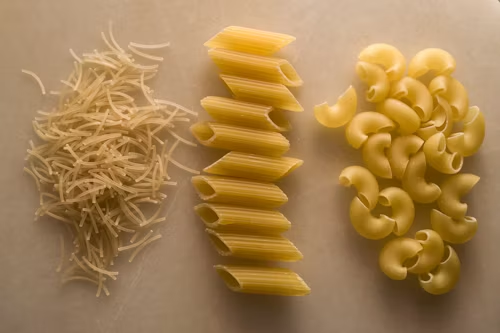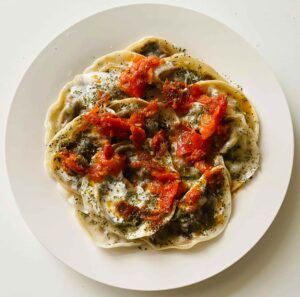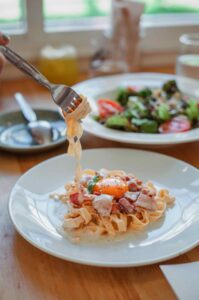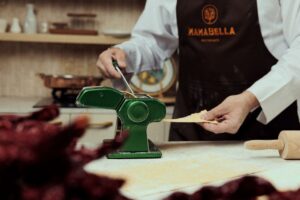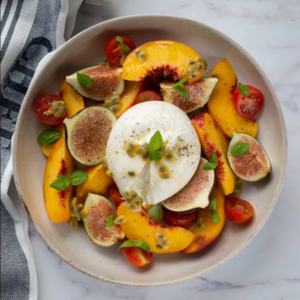At MAMA BELLA, we treat al dente pasta as both science and heritage—a delicious meeting point where Sardinian craft meets careful culinary technique in Dubai. Getting that signature firm-yet-tender bite isn’t guesswork; it’s the result of understanding starch, protein, heat, time, and the way sauce and pasta finish together in the pan. Whether you’re cooking at home or looking forward to our pre-launch tasting experiences at Kempinski, The Boulevard, this guide breaks down the timing, texture, and technique that lead to perfect al dente pasta every single time.
Key Takeaways:
- Al dente pasta is cooked until it offers gentle resistance at the core—firm, never hard; tender, never soft.
- Timing varies by shape and thickness; tasting 1–2 minutes before the package time is the single best test.
- Abundant salted water, a rolling boil, stirring early, and finishing in the sauce help you hit consistent results.
What Is Al Dente, Really?
“Al dente” literally means “to the tooth.” Think of it as a precise point on a continuum rather than a vague preference. Undercooked pasta can be chalky at the core; overcooked pasta swells, loses structure, and goes pasty. In the sweet spot, the surface is fully hydrated and silky while the center retains a faint, pleasant resistance. That contrast is what makes sauces cling beautifully and flavors sing.
The Texture Science: Starch & Protein
Dried pasta made from durum semolina owes its integrity to two key players: starch and protein. As pasta cooks, starch granules hydrate and swell, releasing surface starch that can help emulsify sauce later. Meanwhile, the protein network (formed during extrusion and drying) holds shape under heat. When you cook just to al dente, you allow enough hydration for tenderness without pushing so far that the protein matrix weakens. The result is clean bite, clean flavor, and a surface that welcomes sauce.
Timing: How Long Should Pasta Boil?
Time is a guideline; taste is the rule. Package times are a starting point because flour blends, die shapes, and drying curves vary among producers. Use the printed time to set an expectation, then begin tasting 1–2 minutes earlier. You’re aiming for a center that’s cohesive and springy, not rigid, with no chalkiness when you chew.
- Thin long shapes (spaghetti, linguine): commonly 7–10 minutes to al dente, depending on brand and thickness.
- Short tubes (penne, rigatoni): often 10–13 minutes; thicker walls = longer time.
- Shells & specialty shapes (conchiglie, malloreddus): expect wider ranges; ridges and thickness influence hydration.
- Fresh pasta (egg dough): cooks fast—often 2–4 minutes. Taste early and often.
One more timing truth: what you do after boiling matters. If you’ll finish pasta in the pan with sauce (highly recommended), drain it slightly shy of al dente so it can complete its final 30–60 seconds in the sauce without overshooting.
Technique: Steps That Guarantee Consistency
- Use plenty of water. A large pot reduces temperature drops when the pasta goes in, helping it cook evenly. Crowding leads to sticking and uneven hydration.
- Salt like you mean it. For home cooks, a practical range is about 1–2 tablespoons of salt per 4 quarts (3.8 L) of water. The goal is bright, seasoned pasta that doesn’t rely on sauce alone for flavor.
- Boil, don’t simmer. Bring to a vigorous rolling boil before adding pasta. Return quickly to a boil, then maintain that energy the whole time.
- Stir in the first minute. The most critical anti-clump moment is right after the pasta hits the water. Stir again a few times through cooking.
- Taste early; time precisely. Start tasting 1–2 minutes before the stated time. When it’s just shy of perfect, you’re ready to finish in the sauce.
- Reserve starchy water. Scoop a cup of cooking water before draining. It’s liquid gold for building a glossy, emulsified sauce.
- Finish in the pan (mantecatura). Toss pasta with simmering sauce and splashes of cooking water to bind starch, fat, and aromatics into a creamy emulsion that coats every ridge.
- Don’t rinse (usually). Rinsing washes away surface starch that helps sauce cling. The exception is for pasta salads or when you need to cool pasta fast for a separate use.
Water, Salt, and Temperature: Getting the Medium Right
Boiling water is more than a formality; it’s the controlled environment that hydrates pasta uniformly. A full, rolling boil prevents pieces from settling on the bottom and sticking, and ensures shape integrity. Adequate salinity seasons pasta from within, so each bite tastes complete even before saucing. If the pot is too small, the temperature falls dramatically when you add pasta, delaying the return to a boil and risking gummy exteriors with underdone cores. Think big pot, bold boil, and balanced salt.
Common Mistakes (and How to Avoid Them)
- Only trusting the package. Tasting is your truth. Brands, shapes, and even water mineral content can shift outcomes.
- Undersalting the water. If pasta tastes bland naked, you’ve missed an easy win. Moderate but meaningful salinity sets you up for restaurant-level results.
- Overcooking in the pot. If you plan to finish in sauce (do!), drain earlier. Sauces simmer; time keeps moving.
- Skipping the stir. Early stirring prevents clumps and ensures edges cook at the same rate as centers.
- Rinsing by default. Save rinsing for cold applications; otherwise you’ll lose the very starch that makes sauces glossy and cohesive.
- Forgetting to reserve water. That hot, starchy liquid is your best tool for adjusting thickness and sheen without dulling flavor.
Shape & Sauce Synergy: Why Al Dente Matters?
When pasta is perfectly al dente, sauces cling instead of pooling. Ridges, grooves, and hollow centers trap emulsified sauce, delivering balanced flavor in every bite. In our Sardinian-inspired kitchen work for Mama Bella, we highlight pairings that respect both shape and regional tradition:
- Malloreddus (ridged “gnocchetti”): wonderful with a saffron-scented sausage ragù (alla Campidanese); the ridges hold the sauce beautifully.
- Fregola sarda (toasted semolina pearls): ideal with tomato, clams, or vegetables; the toasted notes love bright, Mediterranean flavors.
- Long cuts (spaghetti, linguine): gorgeous with San Marzano tomato, garlic, and basil—simple, aromatic, and glossy when finished in the pan.
- Short tubes (rigatoni, paccheri): stand up to hearty ragùs and slow-cooked sauces where al dente structure keeps bites lively.
Curious about how we translate these ideas into a refined experience in Dubai? Explore our evolving culinary story and Sardinian roots on our About Us page.
From Heritage to Table: The Mama Bella Experience in Dubai
Located within the luxurious Kempinski, The Boulevard, Mama Bella brings Sardinian cuisine to the heart of Dubai with a warm, modern sensibility. Expect rustic touches—natural textures and wood-fired aromas—balanced by attentive service and an easy elegance suited to gatherings of family and friends. We honor Sardinia’s family-style traditions with dishes meant for sharing, seasonal produce, and daily handcrafted pasta that celebrates time-honored technique. As we are in a pre-launch phase, our team is refining a menu that reflects authentic Mediterranean flavors while embracing the cosmopolitan rhythm of the city.
If you’re planning your next night out or simply researching the best Italian restaurant in Dubai for handcrafted pasta, our vision is clear: premium ingredients, Sardinian soul, and consistently perfect al dente. You can preview signature directions—from tomato-bright classics to creamy emulsions and wood-fired specialties—on our developing menu page, and keep an eye on updates as we approach opening.
Frequently Asked Questions
How do I know it’s truly al dente?
Bite a piece and focus on the center: you want gentle resistance without any chalkiness. The surface should be silky, not mushy. If you’ll finish in sauce, stop boiling right before you reach that point.
Should I ever rinse pasta?
Only for cold salads or when stopping the cooking quickly for a separate application. For sauced dishes, don’t rinse; you’ll wash away the starch you need for creamy, cohesive sauces.
How much salt belongs in the water?
There’s no single number for every kitchen, but a helpful home range is about 1–2 tablespoons per 4 quarts of water. Taste your water—it should be pleasantly seasoned, not briny.
What about fresh vs. dried pasta?
Fresh egg pasta cooks very quickly and offers a tender bite that’s perfect with delicate butter-and-cheese emulsions. Dried durum pasta brings a firmer chew and excels with tomato-based or slow-simmered sauces. Both should be cooked to al dente—just on different timelines.
Can I achieve restaurant-level gloss at home?
Yes. Reserve cooking water, finish pasta in the pan with the sauce, and toss energetically. The combination of surface starch, heat, and movement builds a stable emulsion with beautiful sheen and cling.
Plan Your Culinary Journey
As we prepare to open our doors in Dubai, we invite you to explore our philosophy, see what’s cooking, and register your interest. Visit our reservations page to share your details for upcoming experiences, or discover why pasta lovers call us a destination for the best pasta in Dubai. For those seeking a true Sardinian restaurant in Dubai, Mama Bella brings heritage, technique, and the science of perfect al dente together—one carefully timed bite at a time.
